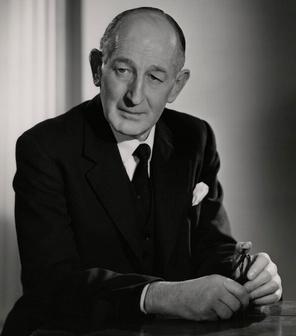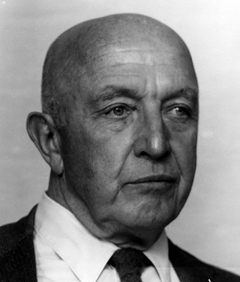
Orthopedic surgery or orthopedics is the branch of surgery concerned with conditions involving the musculoskeletal system. Orthopedic surgeons use both surgical and nonsurgical means to treat musculoskeletal trauma, spine diseases, sports injuries, degenerative diseases, infections, tumors, and congenital disorders.

Computer-assisted orthopedic surgery or computer-assisted orthopaedic surgery is a discipline where computer technology is applied pre-, intra- and/or post-operatively to improve the outcome of orthopedic surgical procedures. Although records show that it has been implemented since the 1990s, CAOS is still an active research discipline which brings together orthopedic practitioners with traditionally technical disciplines, such as engineering, computer science and robotics.

The AO Foundation is a nonprofit organization dedicated to improving the care of patients with musculoskeletal injuries or pathologies and their sequelae through research, development, and education of surgeons and operating room personnel. The AO Foundation is credited with revolutionizing operative fracture treatment and pioneering the development of bone implants and instruments.
Evan Flatow is an American orthopaedic surgeon-scientist. As of 2023, he is President of Mount Sinai West, part of the Mount Sinai Health System. He published more than 400 book chapters and peer-reviewed articles. Flatow is indicated as principal or co-principal investigator for nine research grants and listed on six patents for influential shoulder implant systems.
Sean E. McCance is an American orthopedic surgeon and Co-Director of Spine Surgery in the Leni and Peter W. May Department of Orthopaedics at the Mount Sinai Medical Center in New York City. Additionally, he is an Associate Clinical Professor of Orthopaedics at the Mount Sinai School of Medicine and Attending Spine Physician at Lenox Hill Hospital.

Sir Robert Jones, 1st Baronet, was a Welsh orthopaedic surgeon who helped to establish the modern specialty of orthopaedic surgery in Britain.
Andrew C. Hecht is an American orthopaedic surgeon and a nationally recognized leader in surgery on the spine.
John H. Healey is an American cancer surgeon, researcher, and expert in the surgical treatment of benign and malignant bone tumors and other musculoskeletal cancers. He serves as Chair of the Orthopaedic Service and Stephen P. McDermott Chair in Surgery at Memorial Sloan-Kettering Cancer Center (MSKCC), as well as Professor of Surgery at Weill Cornell Medical College, in New York, NY.

Parviz Kambin was an American-Iranian medical doctor and orthopaedic surgeon. He was a Professor of Orthopaedic Surgery and has established an Endowed Chair of Spinal Surgery Research at Drexel University College of Medicine. He published more than 55 articles in peer-reviewed journals, edited two textbooks and contributed chapters in spinal surgery textbooks. He lectured worldwide in the field of minimally invasive spinal surgery. His research and development in this specialty began in 1970.

Brigadier Robert Neville Atkinson,, FAMA is an Australian orthopaedic surgeon and retired senior officer of the Royal Australian Army Medical Corps, best known for his contributions to trauma and military surgery.
The treatment of broken bones and dislocated joints can be traced as far back as the Ancient Greeks. Hippocrates is credited with a method of reduction of a dislocated shoulder. 16th century Spanish texts talk about the Aztecs use of reduction of fractures using fir branches. The modern discipline of orthopaedics in trauma care developed during the course of World War I, but it was not until after World War II that orthopaedics became the dominant field treating fractures in much of the world. Today, the discipline encompasses conditions such as bone fractures and bone loss, as well as spinal pathology and joint disease.

John Ivor Pulsford James was a British orthopaedic surgeon. He was professor of orthopaedic surgery at the University of Edinburgh from 1958 to 1979. Most commonly known as "JIP", he was secretary then president of the British Orthopaedic Association which later awarded him its honorary fellowship. James attracted orthopaedic specialists to work in Edinburgh, encouraging them to develop an interest in a specialist area of orthopaedics, and in this way he was able to establish a comprehensive regional orthopaedic service. He made contributions to hand surgery and surgical treatment of scoliosis, and was a prime mover in promoting specialist training and qualification in orthopaedic surgery in the UK.

Sir Herbert John Seddon was an English orthopaedic surgeon. He was Nuffield Professor of Orthopaedic Surgery at the University of Oxford, where his work and publications on peripheral nerve injuries gained him an international reputation. His classification of nerve injuries forms the basis of that in use into the 21st century. He went on to become director of the new Institute of Orthopaedics in London and subsequently the first Professor of Orthopaedics in the University of London. In this role he directed basic science research into orthopaedic conditions and developed postgraduate training in orthopaedic surgery. He was President of the British Orthopaedic Association, and was knighted in 1964 for services to orthopaedics.
Gopal Krishna Vishwakarma, more popularly known as G K Vishwakarma, was an eminent orthopedic surgeon, academician and public health administrator. He was the Director General of Health Services from October 1986 to his retirement in October 1992. He was awarded the Silver Jubilee Award (1983) and the Dr. B. C. Roy Award by Medical Council of India, The Government of India, in recognition of his contributions to the field of medicine and public health honored him with the Padma Shri (1985) one of India's highest civilian awards in India.

Raju Vaishya is an Indian researcher with contributions in the field of orthopaedics. He is former President and founder member of Indian Cartilage Society (2018–19) and Founder President of Arthritis Care Foundation. He has established a center for Autologous Chondrocyte Implantation (ACI) at Indraprastha Apollo Hospitals, New Delhi, India. Instrumental (PSI) in starting the first cartilage club in Delhi, to enhance the awareness about the cartilage science and regenerative treatments used in Orthopaedics. He has the credit of doing the first preplan patient specific instruments (PSI) total knee arthroplasty, in Northern India in May 2013.

Ian Scott Smillie OBE, FRCSEd was a British professor of orthopaedic surgery who became an international authority on conditions of the knee. He devised techniques and instruments to facilitate the surgical excision of the damaged knee meniscus. He was an early advocate of specialist team care in orthopaedics and of early mobilisation. His textbooks Injuries of the knee joint and Diseases of the knee Joint were widely read throughout the world. In 1981 he was elected president of the International Society of the Knee.

Christopher Lewis Colton is an English orthopaedic surgeon and Professor Emeritus in Orthopaedic and Accident Surgery at the University of Nottingham. He is a past president of both the British Orthopaedic Association and of the AO Foundation.
Andrew Russell Murray FRCSEd was an Australian orthopaedic surgeon who pioneered developments in hand surgery while working at Leith Hospital, Scotland. These included pollicisation, the use of stainless steel joint prostheses to replace finger joints and the use of wire to stabilise finger fractures and bone grafts. He later worked as an orthopaedic surgeon in Brisbane, Australia. On 1 December 1955 he was shot dead by Karl Kast in the "Brisbane medical massacre".
Sarah Muirhead-Allwood (FRCS), is a British orthopaedic surgeon known for performing complex hip resurfacings and unusual hip replacements. Those she has operated on include The Queen Mother and Andy Murray.
Justin Peter Cobb is a British professor of orthopaedic surgery at Imperial College London, known for introducing medical robotics into orthopaedic surgery. He is a member of the Royal Medical Household and was royal orthopaedic surgeon to the Queen. He is on the staff at King Edward VII's Hospital (KEVII) and is civilian advisor in orthopaedics to the Royal Air Force (RAF). His research has also included themes relating to designing new devices such as for ceramic hip resurfacing, 3D printing in orthopaedics, and training in surgical skills. He is a director of the MSk laboratory based in the Sir Michael Uren Hub.











